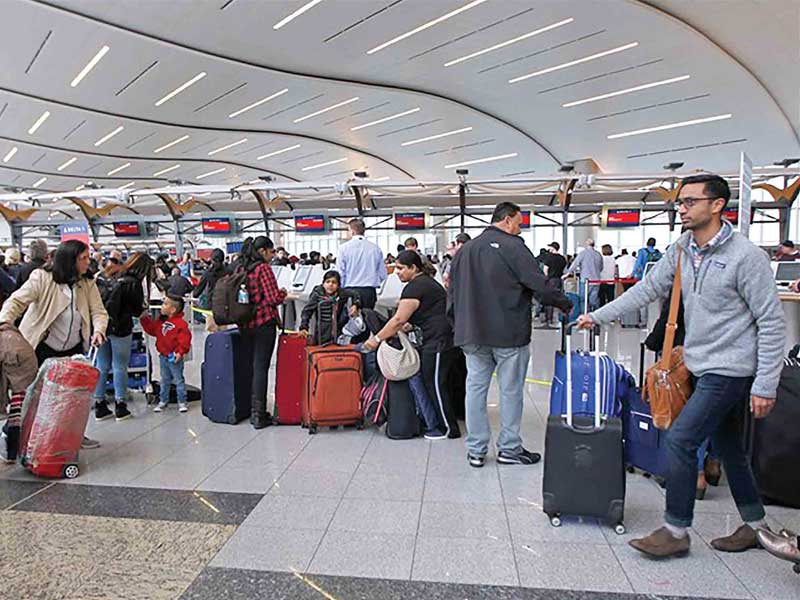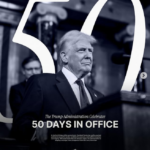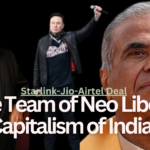A decade ago, Business Week, a leading American business magazine, dubbed several of the US-based Indian software firms as “High-Tech Sweatshops”. These were akin to manufacturing sweatshops in China, which skirted around, even broke, global laws, mistreated workers, and used unethical practices, even as they produced premier global brands. The magazine highlighted several examples to illustrate how the software sweatshops functioned, and how they abused the American visa system to build a network of dubious “human supply chain that reaches halfway around the world”.
Sadly, the chain was reminiscent of the Atlantic African slave trade from the 16th to 19th centuries, albeit wrapped and emblazoned in modern external forms. For example, a New Jersey-based businessman, who recruited software workers in Britain and India, met Kishor Parikh in 2001. Parikh, an engineer from Ahmedabad, Gujarat, was instructed to buy a fake university degree, coached on how to lie dur-ing his visa interview at the US Consulate, and was asked to shell out $9,000 to sponsor his H-1B visa application.

Since the H-1B entitled Parikh to a lucrative job as a software engineer in the US, he was elated. But when he reached the ‘dream coun-try’, no job awaited him. He worked at a greeting card shop, lived in a one-bedroom basement apartment with his wife, parents, and two children. To fool the US regulators, he sent $4,000 a month in money orders to his recruiter, who ran it “through his payroll system as if the money came from a corporate client for Parikh’s (software) services”. It made Parikh look like a legitimate tech worker; this common strategy is called “running the payroll”.
This example, in a nutshell, captures almost everything that was, and is, wrong with the US H-1B visa scheme, which was introduced in 1990 to attract foreign software techies, and went through several rounds of changes in the past three decades. The New Jersey business-man, Nilesh Dasondi, was a typical body-shopper, one who literally shopped for foreign bodies with real or fake software knowledge. He hired them temporarily to the American companies that required cheap tech skills. False information and manipulations in the visa regime were regularly employed to outwit immigration officers, largely due to “lack of governmental oversight”.
Those in search of attractive jobs and “Green Card” dreams would seek fake degrees, either voluntarily or by force. Employees found themselves in the lurch. They were exploited and abused in several ways–they were paid much less than what they were promised, or nothing at all. If they were lucky, their families would live in small apartments, or closeted with dozens of bachelors in 2-3 rooms. The body-shoppers impounded their passports, and threatened to deport them since they were the legal sponsors of the visas.
Ever since 1990, Indian firms were the largest beneficiaries of the H-1B visa scheme. The reasons were obvious: labour was cheap, due to culture and traditions, Indians excelled in math and science, and they could speak in English. What was true in the 1990s continued to be so in 2019. In July 2019, the Indian external ministry said, “Indian nationals received between 67% and 72% of the total H-1B visas is-sued by the US in the last five years.” Between 2015 and 2018, more than 500,000 grabbed H-1B visas, which “played an important role in facilitating the movement of talented Indian professionals”.
CLEARLY, the software shenanigans were devised, initiated and employed by Indians. Since 1990, as the US lawmakers tried to plug gaping holes in their immigration and visa laws, Indians found new ways to skirt the rules. American firms, which benefitted from cheap labour, willingly participated in these monkey businesses to hoodwink the lawmakers, regulators, and enforcers. Workers too came with innova-tive ways to fool the body shoppers and other employers. Bruce Morrison, a politician and the principal author of the 1990 Immigration Act, told the media that there were links between US tech industry lobbyists and lawmakers.

Shopping for bodies
Since the beginning, the migration of tech labour, initially to the US, then Europe, and finally across the globe, was rooted in the same principles as the Atlantic African slave trade. These were the rules of the body collectors and shoppers. Lured by the trade, Indian-Americans set up companies in the US, along with firms in India that were owned by their family members and friends. Together, they searched for the engineers. They promised high-salaried jobs to the workers in established US firms. They had real and imagined pacts with the US firms that required cheap tech skills.
The middlemen, who were majestically dubbed as outsourcers since American firms outsourced their skill requirement to them, took a fixed fee, a few thousand dollars, from the applicants, and also sliced a commission from their salaries. Since the American firms paid the salaries to the body shoppers, the workers had no say in what they got, and how much was kept by the body shoppers. If the middleman hired 1,000 employees a year with a fee of $10,000 each, at a salary of $90,000 a year per person, and kept a cut of $25,000 since $65,000 was the minimum wage, it could make up to $35 million annually.
It suited the employees. The body shopper was their ticket to the land of dreams and prosperity. The salaries, even the lower ones, were way above what they would earn in India. The proposition was more attractive if they could hoodwink the US immigration, and final US employers. Even better, they could become rich if they could also fool the body shoppers. This mindset was widespread in the two southern states of Andhra Pradesh (now split into two) and Karnataka. Hyderabad and Bangalore, the two respective states’ capitals, were filled with recruitment agencies.
For the American firms, the system of temporary recruitment of skilled bodies from an outsourcer made sense too. They didn’t have to employ the staff, and this permitted them to “convert the fixed costs… into the variable costs of a contingent, as-needed workforce of out-sourced workers”. A report said that the new H-1B hires “didn’t have leverage in negotiating salaries”, as they were employed with the body shoppers. Thus, the system of outsourcing became ‘in-sourcing’ as “what they (outsourcer) are doing is helping (the US) companies find workers abroad whom they bring here for new jobs”.

Thus, a layered pyramidal structure developed where the prospective employees either approached, or were wooed, by the body shop-pers, which were based in the US and run largely by Indian-Americans but had networks, associates, and subsidiaries in India. The out-sourcers hired the employees, sponsored their H-1B visa applications, and paid them salaries, all for a one-time fee. The body shoppers then placed the workers with American firms on a temporary basis, and received payments from them. The US companies passed on the risks to the middlemen.
Those in search of attractive jobs and “Green Card” dreams would seek fake degrees, either voluntarily or by force. Employees found themselves in the lurch. They were exploited and abused in several ways–they were paid much less than what they were promised, or nothing at all
A number of the sympathisers of the software sector will immediately rant that this story ended in the nineties. Today, Indian firms are extremely globalised and professional, and are into critical value-added services. But let them take a deep breath, as we reel out more recent examples of body-shopping and software sweatshops.
- In 2015, Walt Disney World shocked the world when it sacked 200 IT workers, and hired an outsourcing firm to provide foreign work-ers on H-1B visas. Southern California Edison, a utility company, and even the University of California laid off hundreds of workers for the same reason in 2016.
- In 2018, it was revealed that Wright State, an institute of higher learning, employed software engineers, “obtained H-1B visas for them”, and paid them salaries and benefits as its employees. What it did not reveal in the visa applications was that the engineers would work with Webyoga, a private software firm that inked “sponsored research contracts” with Wright State. The employees worked as consultants for Webyoga, and were not stationed at the premises of Wright State, but in various cities across the US, including New York, Orlando, and Atlanta. The institute entered into similar deals with other companies.
- In 2017, an Indian-American, Raju Kosuri, was sentenced to jail on charges that he “used shell companies to fraudulently apply for nearly a thousand foreign workers”. Kosuri’s firms were “paid millions (of dollars) by companies where those visa recipients worked”. He became so ambitious and greedy that he “obtained millions (of dollars) in bank financing by misrepresenting his business, as well as a $500,000 grant from the Virginia Tobacco Commission”.
According to the Business Week article mentioned earlier, the signboards of the body shoppers seem to appear across the US. “Body shops have sprung up around major metropolitan areas to be close to their clients. One cluster is in northern New Jersey, across the Hud-son River from Manhattan. Hundreds of small tech services firms operate in such towns such as Believille, West Windsor, and Edison.” Millions of Indians reside in Silicon Valley. As an angry reader wrote, “Go to Yosemite in the summers, and you will see thousands of Indi-ans because there are so many in the Bay Area now.”
Fooling visa officers
The first step in the modus operandi to openly flout visa and immigration laws is to cook up the relevant degrees to prove that the appli-cants are qualified, and possess tech skills that are in shortage in the US. As the earlier mentioned example of Parikh shows, fake degrees are freely available in India. Several registered and unregistered software and engineering institutes sell certificates, which can cost between a few thousands of rupees and few hundred thousands depending on the quality of the degrees and the desperation of the students and institutes.
According to media reports, even top-notch Indian software giants like Infosys and TCS (Tata Group) send H-1B workers, who hold “no more than a Bachelor’s degree”, and not even an engineering one. A study conducted a few years ago found that 85% and 78% of the H-1B’s of Infosys and TCS, respectively, held only a Bachelor’s degree. “Only 1-in-206 of Infosys’ H-1B workers held an advanced degree from a US university, and even less of Tata’s H-1B workers did, just 1-in-222.” American tech workers alleged that only a fifth of
the top Indian IT firms were “talented” and skilled.
DURING the 1990s and 2000s, one heard anecdotes of bus conductors, others who did menial jobs, and semi-literate sons and daughters of feudal landlords, who managed to bag the coveted H-1Bs. Money was freely exchanged. They were coached and trained by the body shoppers to game the interviews with the visa officers at the US embassy and consulates in the various Indian cities. In case of the prospective employers, where they would finally work, telephone interviews were fixed. In the days before Skype, a English-speaking person would take the interview for a fee.

On the long flights to the US, candidates would digest information from software books to learn the various computer languages. Ethnic, caste, class, and creed networks were used to protect these workers at the workplaces from the glaring eyes of their foreign supervisors. For example, people from Andhra Pradesh would protect their Telugu-speaking brethren by doing their work and training them for the first few weeks and months. Such networks were widely used to get family members, friends, and relations to get H-1Bs. Even the body shop-pers used such social links to get the bodies.
Indian firms managed to monopolise H-1B visas despite the annual caps on them. The cap has varied over the decades. For example, H-1Bs are granted through a computer-run lottery, and companies had to submit labour condition applications (LCAs). According to reports, most software firms used one application for dozens of software workers. Thus, “the more LCAs a company gets approved, the more H-1B applications it can submit”. Indian companies could hike the number of LCAs in the times of demand – between 2010 and 2014, the num-bers shot up from 50,000 to 200,000 for TCS, 50,000 to 175,000 for Infosys, and 25,000 to 130,000 for Wipro.

Since there was a cap on the number of H-1B visas that the US issued each year, Indian IT firms found innovative ways to use other vi-sas to wing their software engineers to America. People in the industry contend that the H-1B system is abused through overstays. Also, the real number of Indians in the US software sector remains hidden because it didn’t include H-1B renewals, and H-1Bs converted into green cards (and citizenship). In addition, other visas like L-1 (for foreign workers to relocate to the US if they had spent a year aboard) and B-1 (for short-term business stays) were misused.
IN a sensational case in 2013, Infosys paid $30 million for a settlement on charges that it misused the B-1 visa regime. Unlike the H-1Bs, the B-1s have no limit, and such visa holders are not allowed to work in the US. However, it was alleged that Infosys used B-1 visa holders “to perform jobs that involved skilled labour” that had to be performed by Americans or H-1B visa holders. Obviously, the purposes of visits on the B-1 visa applications were false; they stated that the applicants had to attend meetings or discussions. In reality, he or she worked on specific projects for specific clients.
In a sensational case in 2013, Infosys paid $30 million for a settlement on charges that it misused the B-1 visa regime. Unlike the H-1Bs, the B-1s have no limit, and such visa holders are not allowed to work in the US. However, it was alleged that Infosys used B-1 visa holders “to perform jobs that involved skilled labour” that had to be performed by Americans or H-1B visa holders
According to the investigators, Infosys prepared a “Do’s and Don’ts” memorandum for their workers, who applied for B-1 visas on how to fool the visa officers. The memo mentioned the following directions:
- Don’t mention activities like implementation, design and testing, consulting, etc, which sound like work
- Also do not use words like work, activity, etc. in the invitation letter (that they submitted as evidence to justify their visits)
- Please do not mention anything about contract rates
Even the American clients were roped in for the massive subterfuge. Contracts were rewritten and revised to conceal the fact the B-1 workers were used for skilled or unskilled labour that had to be performed by either Americans or foreigners with H-1Bs. Infosys billed the clients for offshore work, i.e. work done in its Indian software campuses, “when, in fact, work was being performed by B-1 visa holders in the United States”. In essence, both the spirit and letter behind the H-1B regime was violated.
Dependents of the H-1B visa holders, like spouses, abused the immigration regime. They got, what was called, the H4 EADs, which was introduced in 2015 and allowed them to take skilled tech jobs. Most of the wives and husbands of the H-1Bs were engineers or science graduates, and partly or fully trained in software. They happily applied for jobs, and got them. According to American techies, who wrote letters as responses to media articles, the government had to ban such practices, as there was “no demonstrated labour need at all for H4 EAD”. Only now has the Donald Trump regime targeted H4 EADs.
Two-way slave trade
Given the scope of machinations and manipulations, it was but logical for both the hirers and hires to exploit each other. The body shoppers, and genuine firms, had immense control over the workers. A study by Jessica Rosenbaum found, “When an employee comes to the US on an H-1B visa, the visa is held by the employer, not the worker. If the employee complains, the company can terminate its visa sponsorship and the worker must leave the country.” According to several immigration attorneys, The H-1B visa holders don’t know their rights. They are essentially captives.”
IN several cases, at least until the early 2000s, the body shoppers impounded the passports of the applicants, who had no recourse if they were mistreated. Obviously, the entire system was based on cheap labour, quite like the Atlantic Africa slave trade, which was prompted by free labour. According to a study a few years ago, Indian and foreign companies saved an annual average of $20,000 per H-1B, compared to the average salary of a comparable American. The figure was higher if the actual salaries of foreign workers were compared with the highest in a specific area or region.

However, the Indian firms didn’t pay the negotiated salaries. Despite the minimum salary imposed by the US laws, the body shoppers and middlemen kept a cut. Sometimes, there were no jobs for the aspirant H-1Bs when they landed in the US. In addition, they were not paid in between jobs at the clients’ sites. This phase is referred to as “benched” in software jargon. It implies that the worker sits on the bench for indefinite period till the body shopper can place him with another client, or the original client can rustle up a new project.
Unfortunately, the India firms justified the concept of benching. They explained that the process enables them to keep enough skilled workers on hold until the clients decide to scale up their projects. In such cases, the workers can be deployed immediately. But they fail to acknowledge that several ways are found to pay less or nothing to the benched employees. More importantly, the concept “violates US laws because companies are supposed to have an open position before they apply for a work visa”.
Consider the case of Prasad Nair, who filed a civil suit against a body shopper in 2007. He said that he was offered $60,000 a year to work in Michigan. Instead, he was sent to
San Diego, where both the prevailing wages and cost of living were higher. On top of this, the body shopper “made unlawful deductions, delayed payments, failed to pay overtime, and postponed health benefits for his family”. According to Nair’s attorney, Prasad “struggled from pay-check to pay-check to take care of his wife and 9-month old daughter, and regularly ate at Burger King to save money”.
Such practices, unfortunately, continue till today. The IT boom and prosperity hides a soft and dark underbelly, which is only exposed when specific scandals rock the smooth-sailing ships. Otherwise it is work as usual; IT is hailed as a panacea.
Alam Srinivas is a business journalist with almost four decades of experience and has written for the Times of India, bbc.com, India Today, Outlook, and San Jose Mercury News. He has written Storms in the Sea Wind, IPL and Inside Story, Women of Vision (Nine Business Leaders in Conversation with Alam Srinivas),Cricket Czars: Two Men Who Changed the Gentleman's Game, The Indian Consumer: One Billion Myths, One Billion Realities . He can be reached at editor@gfilesindia.com



























































